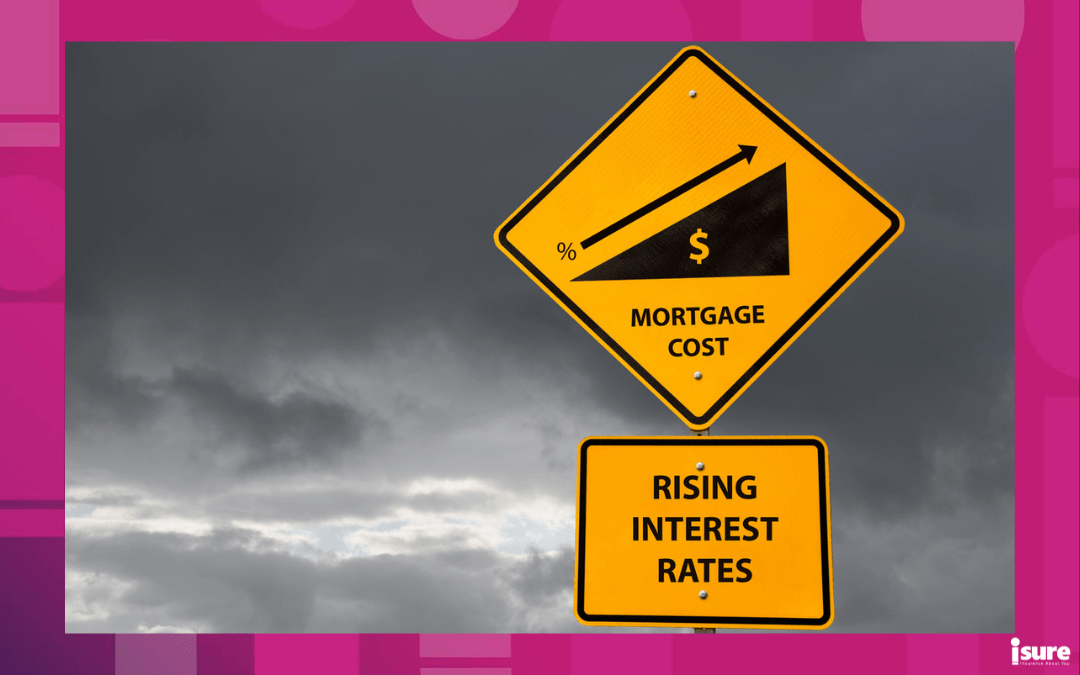On July 12th, 2023, the Bank of Canada (BoC) announced it was raising its interest rate to 5%. This comes only weeks after its early June decision to raise it to 4.75%. As a result, this brings borrowing costs to a level Canadians have not seen in 22 years. The Bank of Canada (BoC) raised its benchmark interest rate by 25 basis points on Wednesday, marking the first time since April 2001 that the figure hit five percent. This follows a hike in interest rates on May 31 citing higher-than-expected GDP growth and strong demand for labour. So why the increase? Let’s take a closer look.
Why another interest rate increase?
The COVID-19 pandemic changed the economic landscape in 2020. To boost the economy, the Bank of Canada lowered its policy interest rate to 0.25%. However, since January 2022, the BoC raised its policy interest rate by 4.75%. This is an attempt to slow down high inflation. In June 2022, inflation was the highest it’s been in almost 40 years. Although it has slowed in the months since, it remains high. Too high for the BoC, that hopes it will come down to its 2% inflation rate target.
The latest rate hike marks the 10th by the central bank since March 2022. The move was expected by economists after Statistics Canada released its June labour force survey last week showing that Canada added 60,000 jobs last month — further contributing to an overheated economy. Some of the country’s biggest lenders, including the Royal Bank of Canada, CIBC, Bank of Montreal and TD Bank, have already announced that they will match their increase effective Thursday to align with that of the central bank’s. The effects of interest rate hikes can sometimes take a year or a year-and-a-half to play out in the economy.
Inflation has been slowing, but not quickly enough
The central bank has said repeatedly that Canada’s hot labour market is contributing to high inflation, raising concerns about the pace of wage growth in particular. The rate increase amounts to 475 basis points in total since March 2022, taking the overnight rate to a new 22-year high. Inflation in Canada eased to 3.4% in May, a substantial and welcome drop from its peak of 8.1% last summer. While CPI inflation has come down largely as expected so far this year, the downward momentum has come more from lower energy prices, and less from easing underlying inflation. Inflation is not expected to fall to the central bank’s 2% target at least until 2025. Economists say core inflation, stripped of volatile food and energy prices, will fall only slightly by year-end.
How is the Canadian economy doing?
With all the statistics and opinions about the state of Canada’s economy, let’s review some data:
- Canada’s economy grew by 3.1% (annualized) in the first quarter of 2023. Stronger household spending and exports supported the economy.
- Canada’s economic growth surpassed expectations in May, though inflation was still above the BoC’s 2% target.
- Inflation dropped to 3.4% in May 2023, which is its lowest level since 2021.
- Canada’s labour market remained strong, but eased slightly in May. The economy lost jobs and the unemployment rate rose to 2%.
- The information technology sector posted a double-digit gain.
What is a policy interest rate?
The policy interest rate is set by a country’s central bank, such as the Bank of Canada. Its policy rate serves as a reference point for the rates banks charge to consumers.These rates affect the interest rates you pay on:
- Your mortgage
- Your home equity line of credit
- Other types of credit
What do rate increases mean for homeowners, homebuyers and renters?
Interest rates are the highest they’ve been since April 2001! Higher interest rates make loans and mortgages more expensive. If you are planning on renewing your mortgage, buying a home, or taking out a loan, it’s important to consider how to handle that debt or loan at a higher interest rate. For first-time homebuyers, even a slight increase in interest rates can have a significant impact over time. The latest increase pushed the prospect of ownership for some first-time buyers even further out of reach. Rising rates also affect the rental market, as higher mortgage costs eventually impact tenants. The cost is often passed down to the tenant through rent increases.
How will the rise in interest rates affect your mortgage?
Higher interest rates make loans and mortgages more expensive. Homeowners in cities with high-priced real estate, like Vancouver and Toronto, could pay hundreds of dollars more on regular mortgage payments. Higher interest rates also affect lines of credit, as well as car and student loans. With this interest rate increase, homeowners with a variable-rate mortgage and those looking to renew will feel the financial squeeze acutely, economists say. A homeowner with a $500,000 mortgage, 25-year variable rate loan at a rate of 5.8 percent on Tuesday would have been paying $2,512 a month. After Wednesday’s hike, their rate is likely to jump to 6.05%, which will bump their monthly payment up to $2,571 a month. That’s an increase of more than $700 a year. Exact numbers will depend on the specifics of the loan, but on average, mortgage analytics site RateHub.ca says mortgage holders can expect to pay $100 more per month on their mortgage after Wednesday’s hike.
Can rising interest rates cause a recession?
Rapid increases in interest rates can often lead to a recession. Since 1961, there have been three instances where the BoC raised interest rates rapidly to slow down inflation. It led to a recession every time. However, the economy is doing better than what forecasters predicted, and the job market is perceived by workers as strong. Despite the positive economic data, consumers remain cautious. This will most likely lead to curbs in spending on things, such as travel, entertainment and social activities.
Are consumers ‘tapped out’?
Households haven’t yet buckled under the pressure of higher interest rates and inflation. But spending growth has been slowing. Delinquency rates on (non-housing) consumer debt have been rising, and that is with the unemployment rate still running around multi-decade lows. Spending continues to be distorted by pent-up demand from the pandemic – auto purchases have increased as supply of vehicles improves after years of shortages. But labour demand continues to slow as headwinds from the lagged impact of interest rate increases build.
Sadly, there’s more interest rate hikes to come
According to analysts at RBC, they continue to expect GDP to post small declines in the second half of 2023 in the U.S. and Canada. Unemployment rates have already started to increase (up 0.2 ppts and 0.4 ppts as of June, respectively, from multi-decade lows in the spring.) However, sticky inflation, in part driven by persistent domestic consumer demand, means they now don’t expect the first cut from the Fed until Q2 of next year. The BoC will not begin to lower interest rates until a quarter after that. As higher interest rates continue to work their way through the economy, the Bank expects economic growth to slow, averaging around 1% through the second half of this year and the first half of next year. This implies real GDP growth of 1.8% in 2023 and 1.2% in 2024. The economy will move into modest excess supply early next year before growth picks up to 2.4% in 2025.
If you are looking to get more information regarding your home insurance policy or looking to get a quote, please contact us today.




